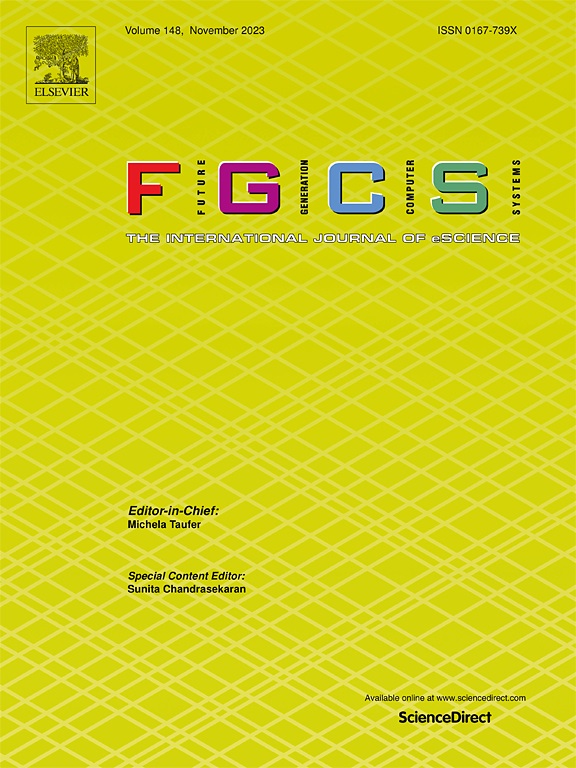实践状态:评估状态向量和张量网络方法的GPU性能
IF 6.2
2区 计算机科学
Q1 COMPUTER SCIENCE, THEORY & METHODS
Future Generation Computer Systems-The International Journal of Escience
Pub Date : 2025-05-31
DOI:10.1016/j.future.2025.107927
引用次数: 0
摘要
量子计算(QC)在经典硬件上的模拟前沿正迅速达到计算可行性的硬可扩展性极限。尽管如此,仍然需要经典地模拟大型量子系统,因为嘈杂的中间尺度量子(NISQ)设备在每秒操作方面尚未被认为具有容错性和足够的性能。两种主要的精确仿真技术——状态向量和张量网络模拟器——都有其特定的局限性。本文在一个由八个广泛使用的量子子程序组成的试验台上研究了当前最先进的模拟技术的局限性,每个子程序都有不同的配置,并特别强调了性能。我们在一台超级计算机上进行了单进程和分布式可扩展性实验。我们将此类实验的性能测量与表征基准电路的指标相关联,确定观察到的性能趋势背后的主要原因。具体来说,我们执行了分布式切片张量收缩,并分析了寻路质量对收缩时间的影响,将两种结果与拓扑电路特性相关联。根据我们的观察,考虑到量子电路的结构和量子比特的数量,我们强调了如何选择最佳的模拟策略,展示了预防性电路分析如何指导和提高模拟性能超过一个数量级。本文章由计算机程序翻译,如有差异,请以英文原文为准。
State of practice: Evaluating GPU performance of state vector and tensor network methods
The frontier of quantum computing (QC) simulation on classical hardware is quickly reaching the hard scalability limits for computational feasibility. Nonetheless, there is still a need to simulate large quantum systems classically, as the Noisy Intermediate Scale Quantum (NISQ) devices are yet to be considered fault tolerant and performant enough in terms of operations per second. Each of the two main exact simulation techniques, state vector and tensor network simulators, boasts specific limitations.
This article investigates the limits of current state-of-the-art simulation techniques on a test bench made of eight widely used quantum subroutines, each in different configurations, with a special emphasis on performance. We perform both single process and distributed scaleability experiments on a supercomputer. We correlate the performance measures from such experiments with the metrics that characterise the benchmark circuits, identifying the main reasons behind the observed performance trends. Specifically, we perform distributed sliced tensor contractions, and we analyse the impact of pathfinding quality on contraction time, correlating both results with topological circuit characteristics. From our observations, given the structure of a quantum circuit and the number of qubits, we highlight how to select the best simulation strategy, demonstrating how preventive circuit analysis can guide and improve simulation performance by more than an order of magnitude.
求助全文
通过发布文献求助,成功后即可免费获取论文全文。
去求助
来源期刊
CiteScore
19.90
自引率
2.70%
发文量
376
审稿时长
10.6 months
期刊介绍:
Computing infrastructures and systems are constantly evolving, resulting in increasingly complex and collaborative scientific applications. To cope with these advancements, there is a growing need for collaborative tools that can effectively map, control, and execute these applications.
Furthermore, with the explosion of Big Data, there is a requirement for innovative methods and infrastructures to collect, analyze, and derive meaningful insights from the vast amount of data generated. This necessitates the integration of computational and storage capabilities, databases, sensors, and human collaboration.
Future Generation Computer Systems aims to pioneer advancements in distributed systems, collaborative environments, high-performance computing, and Big Data analytics. It strives to stay at the forefront of developments in grids, clouds, and the Internet of Things (IoT) to effectively address the challenges posed by these wide-area, fully distributed sensing and computing systems.

 求助内容:
求助内容: 应助结果提醒方式:
应助结果提醒方式:


